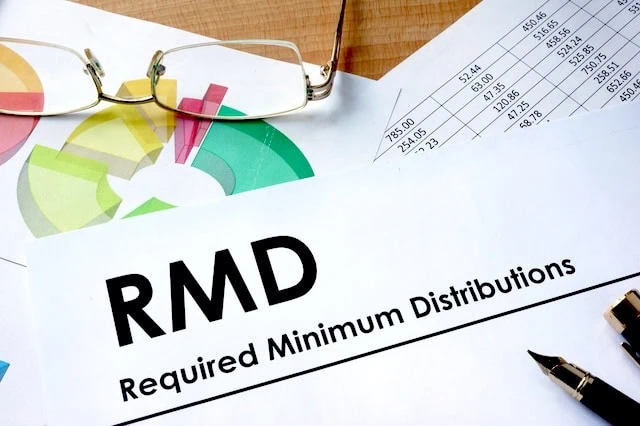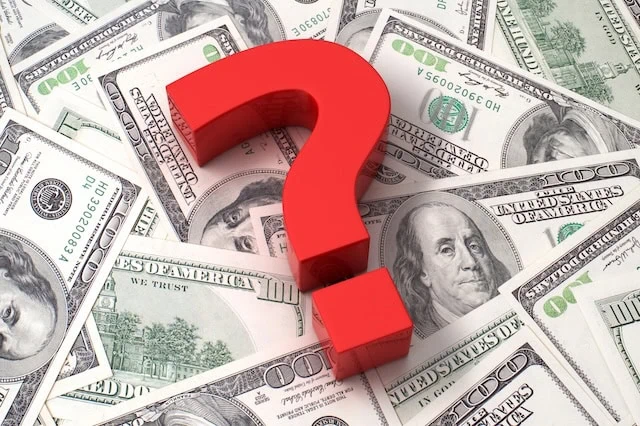What goes up must come down.
That’s a basic way of expressing gravitational pull, but I’m actually talking about the balances of certain retirement accounts. If you invest in a tax-deferred retirement vehicle like an individual retirement account (IRA) or 401(k), you won’t be allowed to grow your money indefinitely without taking some out.
Instead, you’ll be forced to make required minimum distributions (RMDs). That’s not the account provider’s rule—that’s the government talking. And the law says that when you reach a certain age, you must withdraw a certain amount of money from some types of retirement accounts each year.
Not only is it mandatory, but it also transforms a portion of your wealth from tax-deferred savings into taxable income. So if you have high account balances, this can make a significant impact on your tax returns.
Today, I’ll show you what you might expect your RMDs to be if you have $1 million inside your retirement accounts, and I’ll do so across a range of ages and marriage scenarios. I’ll also show you how to calculate RMDs for yourself (no matter how much you have), and provide a few options for anyone who wants to lower their RMDs.
Featured Financial Products
Disclaimer: This article does not constitute individualized financial advice. The information appears for your consideration, not as a personalized recommendation. Act at your own discretion.
Who Is Subject to Required Minimum Distributions?

If you have one or more tax-deferred retirement accounts—such as a traditional IRA, 401(k), or 403(b)—once you reach a certain age, you’ll have to pay RMDs.
Right now, that age is 73, But per the SECURE ACT 2.0, that age will rise to 75 effective Jan. 1, 2033. (Put differently: If you turn 74 after Dec. 31, 2032, your RMD age will be 75.)
When you turn 73 (or 75 for currently younger folks), you have until April 1 of the following year to withdraw your RMDs. Each year after that, one’s RMDs are due by the end of the calendar year.
Do you want to get serious about saving and planning for retirement? Sign up for Retire With Riley, Young and the Invested’s free retirement planning newsletter.
How Do I Calculate My RMDs?

Let’s discuss how you can calculate your RMD at any age, with any account balance.
Do the following to calculate your RMD:
- Determine the balance of each of your tax-deferred retirement accounts as of Dec. 31 of the previous year.
- Find your distribution period for the age you turned or will turn this year. The IRS provides this information in the following tables:
- The Uniform Lifetime Table (Table III): This table applies to you if you are unmarried, married to a spouse who is no more than 10 years younger than you, or married to a spouse who is not the sole beneficiary of your account.
- The Joint and Last Survivor Life Expectancy Table (Table II): This table applies if you are married to a spouse who is both at least 10 years younger than you and listed as the 100% primary beneficiary of your account for the entire year.
- Divide each tax-deferred account balance by the distribution period to find each account’s RMD.
Example: Matthew, who is unmarried, turns 78 in November 2027. He owns a traditional IRA worth $500,000 on Dec. 31 of the prior year (2026). To calculate his RMD, which is due by Dec. 31, 2027, he would divide his balance ($500,000) by the distribution period (22.0) on Table III. His RMD for that IRA is $22,727.27 ($500,000 / 22.0 = $22,727.27).
A retirement plan administrator or IRA custodian may calculate the RMD for you, but ultimately, if you’re the account owner, you’re responsible for withdrawing the appropriate amount. (Also, you may always withdraw more than your RMD; just understand that doing so won’t count against your next year’s RMDs.)
How Much Is My RMD If I Have $1 Million in My Retirement Accounts [Uniform Lifetime Table III]?

So, what are your RMDs if you have $1 million saved up in your retirement accounts?
For the calculations, we’re going to assume that you have $1 million in your account as of the end of the prior year, and that one of the following is true:
- All $1 million is invested in one account of any kind.
- All $1 million is invested across more than one IRA.
- All $1 million is invested across more than one 403(b).
This is just for simplicity’s sake. Any one of the above scenarios would require you to calculate just one RMD. In most other situations (say, the $1 million is split between a 401(k) and an IRA), you would have to calculate separate RMDs for each tax-deferred account based on its individual balance.
First, let’s go over the numbers for people who should use Table III. Remember: This is the table that applies to you if you are unmarried, your spouse is not the sole beneficiary, or your spouse is not more than 10 years younger than you. The following is a sample of ages and distribution periods for Table III:
- Age 73 has a distribution period of 26.5.
- Age 74 has a distribution period of 25.5.
- Age 75 has a distribution period of 24.6.
- Age 76 has a distribution period of 23.7.
- Age 77 has a distribution period of 22.9.
- Age 78 has a distribution period of 22.0.
- Age 79 has a distribution period of 21.1.
- Age 80 has a distribution period of 20.2.
Using those distribution periods, if you had $1 million in your tax-deferred retirement accounts at the end of last year, the following would be your RMD, rounded to the nearest dollar:
- Age 73: $37,736
- Age 74: $39,216
- Age 75: $40,650
- Age 76: $42,194
- Age 77: $43,668
- Age 78: $45,455
- Age 79: $47,393
- Age 80: $49,505
How Much Is My RMD If I Have $1 Million in My Retirement Accounts [Joint + Last Survivor Table II]?

You should use Table II if you’re married, your spouse is more than 10 years younger than you, and your spouse is the sole beneficiary of your account. Your calculations will look different from people using Table III because Table II uses both your age and your spouse’s age.
Here’s a sample:
- Age 73, with a spousal age of 60, has a life expectancy factor of 28.6.
- Age 74, with a spousal age of 61, has a life expectancy factor of 27.7.
- Age 75, with a spousal age of 62, has a life expectancy factor of 26.8.
- Age 76, with a spousal age of 63, has a life expectancy factor of 25.9.
- Age 77, with a spousal age of 64, has a life expectancy factor of 25.0.
- Age 78, with a spousal age of 65, has a life expectancy factor of 24.1.
- Age 79, with a spousal age of 66, has a life expectancy factor of 23.2.
- Age 80, with a spousal age of 67, has a life expectancy factor of 22.3.
Using those life expectancy factors, and $1 million in retirement accounts as of the end of last year, the following would be your RMDs based on those ages, rounded to the nearest dollar:
- Age 73: $34,965
- Age 74: $36,101
- Age 75: $37,313
- Age 76: $38,610
- Age 77: $40,000
- Age 78: $41,494
- Age 79: $43,103
- Age 80: $44,843
Featured Financial Products
How Do I Reduce My RMDs?

Are your RMDs higher than you need for your expenses? Good news! There are several ways to reduce your RMDs. Unfortunately, some of the strategies would have needed to be implemented before you entered retirement. But don’t worry if you’re already a retiree. There are still options.
Let’s say you want to donate to charity (or would like to start doing so). Individuals age 70½ and older can make qualified charitable distributions (QCDs) directly from their traditional IRA to a qualifying charity. This action allows you to omit the charitable amount (up to annual limits) from your gross income. If you’re taking RMDs, QCDs can count toward your distributions for the year.
Another path is to do a Roth conversion, as Roth accounts aren’t subject to RMDs. If your income is too high to be eligible for a Roth conversion, you may still be able to do a backdoor Roth conversion. Keep in mind, though, that Roth conversions have tax implications. Carefully consider this option, or talk to an advisor, before making any moves.
Want to talk more about your financial goals or concerns? Our services include comprehensive financial planning, investment management, estate planning, taxes, and more! Schedule a call with Riley to discuss what you need, and what we can do for you.









